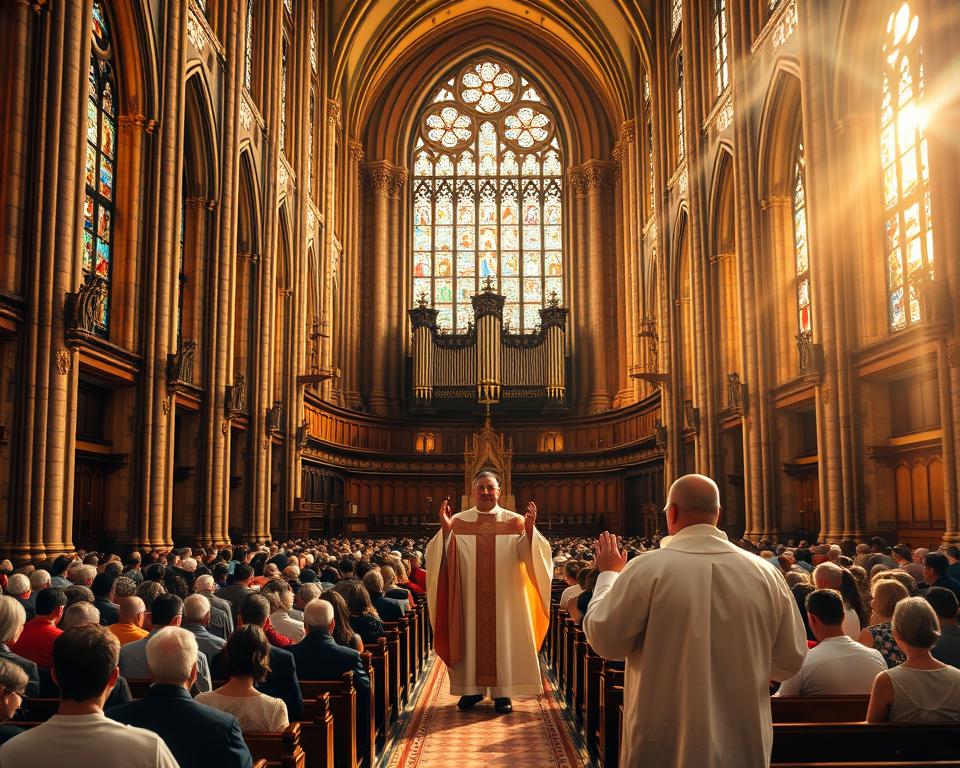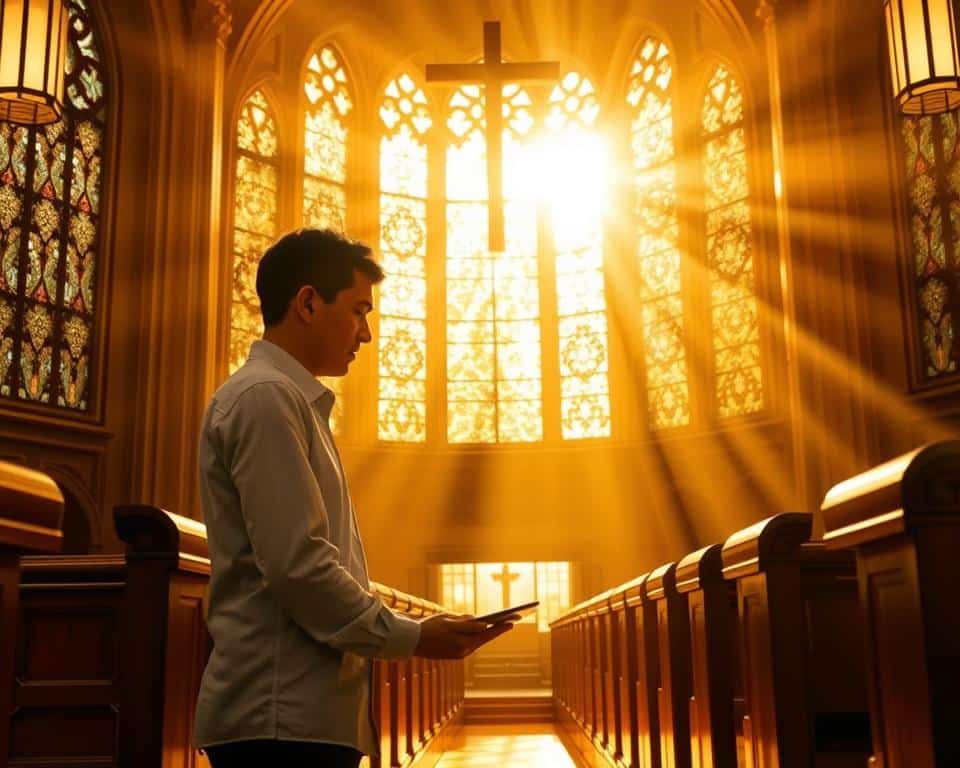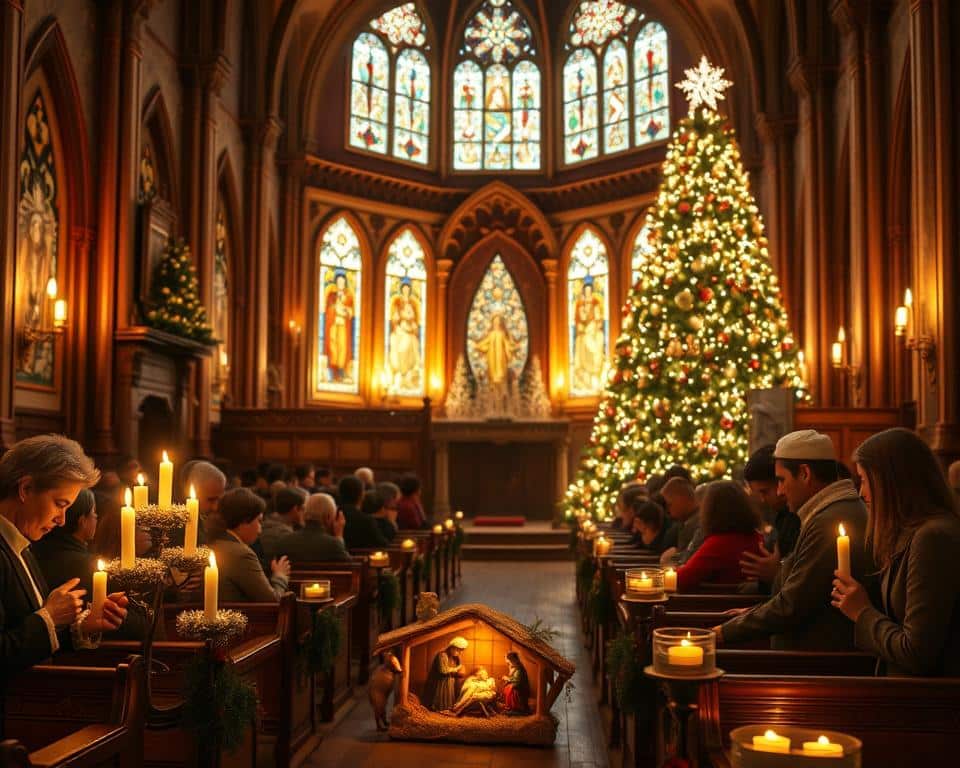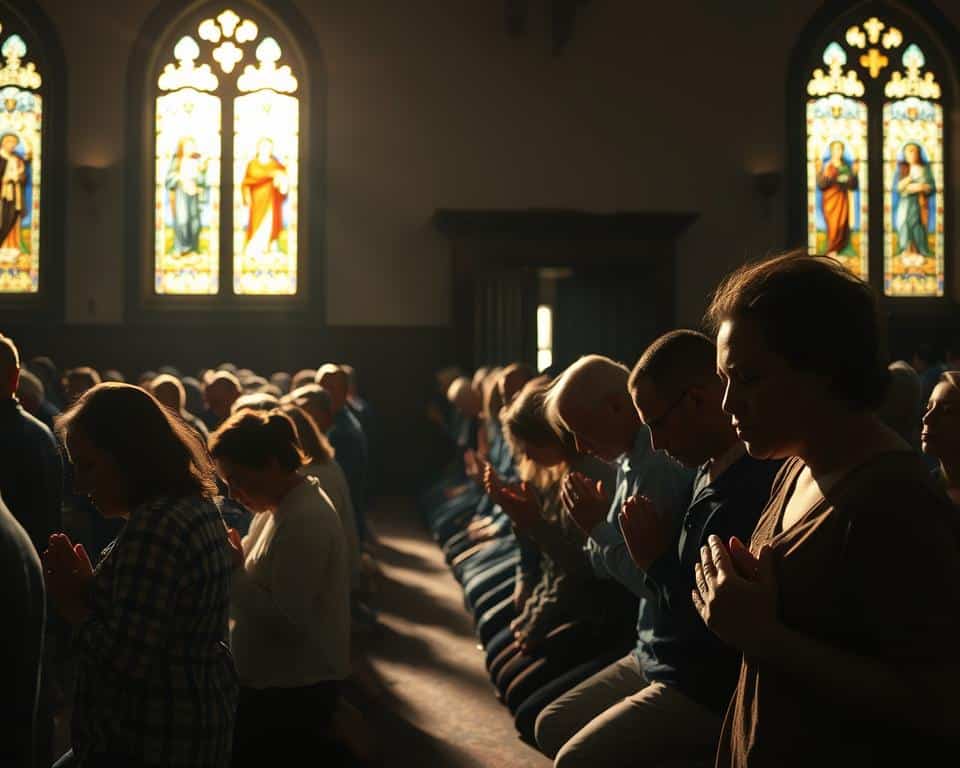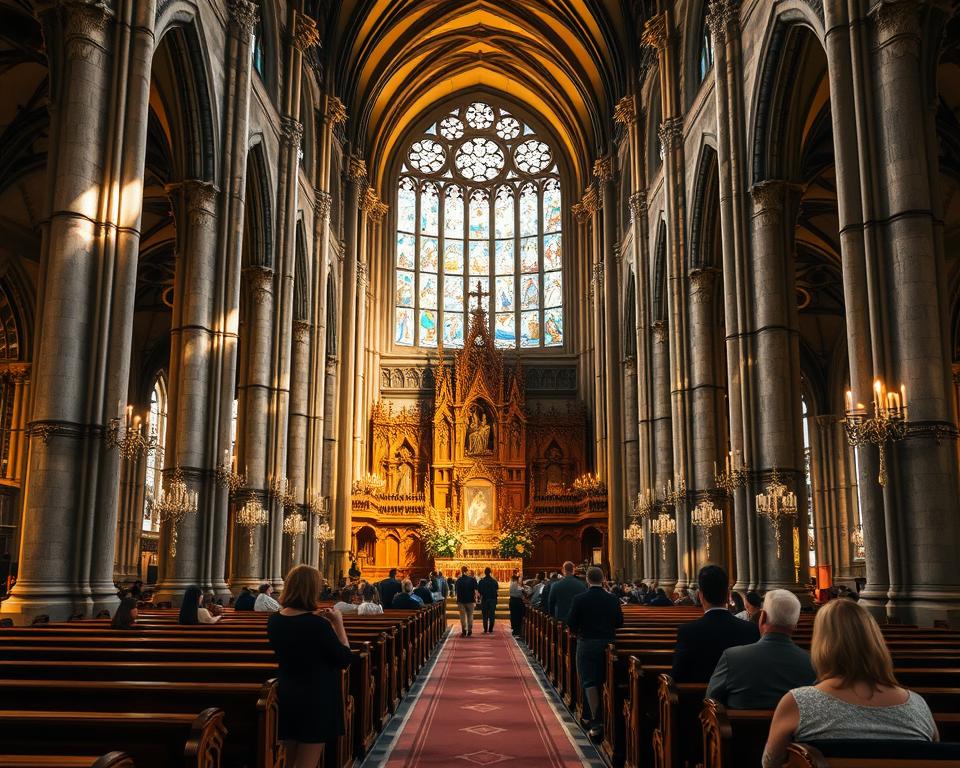“The Sabbath was made for man, not man for the Sabbath.” —Jesus’ words in Mark 2:27 remind us that God’s design for rest and worship centers on grace, not rigid rules. But why did the early church shift focus from the seventh-day Sabbath to the first day of the week?
For many believers, the day of gathering holds deep meaning. Scripture shows Jesus rising on the first day (Matthew 28:1), transforming grief into joy. The disciples later met to break bread on this day (Acts 20:7), setting a pattern still followed today.
Yet modern life brings challenges. Work schedules, family demands, and cultural shifts compete with church attendance. You might wonder—does this time still matter? The answer lies in three truths: Christ’s resurrection, early believers’ example, and the ongoing call to celebrate hope.
Let’s explore how faith reshaped a day of mourning into one of victory.
Understanding Sunday Worship in Christianity
Early believers faced a pivotal shift in sacred time after Christ’s resurrection. The seventh day, commanded in Exodus 20:8–11 for rest, gave way to the first day week—a celebration of new life.
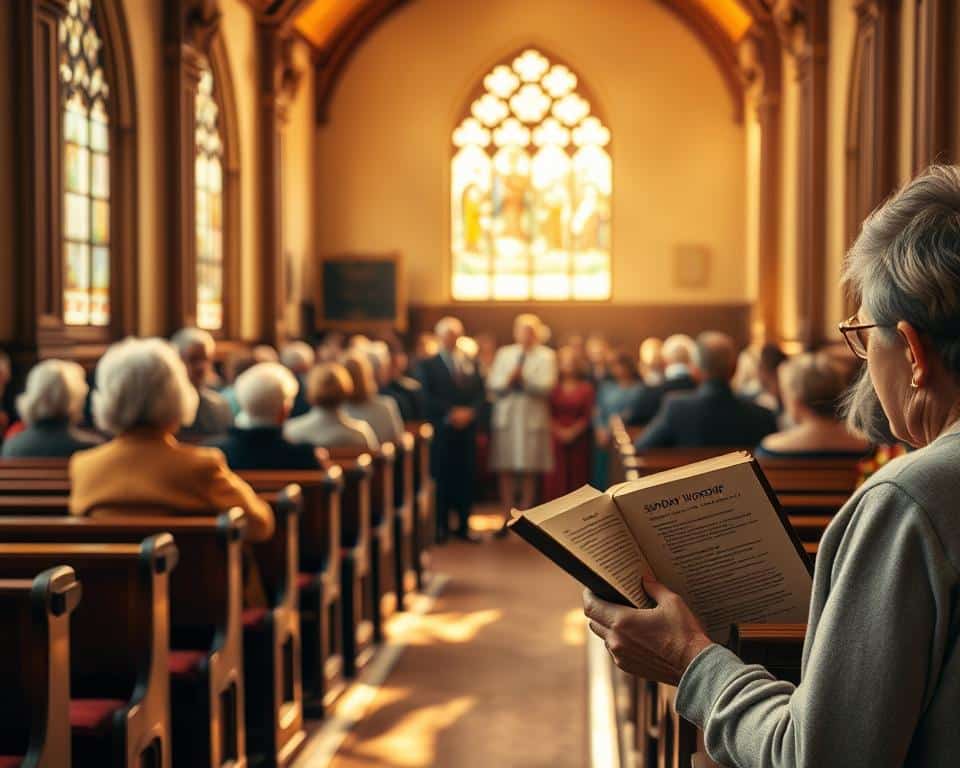
From Sabbath to the Lord’s Day
Exodus anchored worship on the sabbath day, but Revelation 1:10 called it “the Lord’s Day.” Jesus’ resurrection turned grief into joy, making the first day a weekly reminder of victory.
Cultural Challenges Today
In the 1950s, stores closed on Sundays. Today, youth sports and work schedules compete with gathering. The pandemic further disrupted the practice of in-person worship.
- Work conflicts: Shift work makes Sunday attendance harder.
- Digital shift: Many now stream services midweek.
- Intentional choice: Prioritizing worship is countercultural but transformative.
As Richard Foster noted, “Sacred time requires sacred resolve.” The resurrection’s hope still calls us to gather—no matter the age or obstacle.
The Biblical Foundation for Sunday Worship
Jesus Christ transformed the meaning of sacred time through His life and resurrection. He didn’t discard the law but fulfilled it, as Matthew 5:17–19 explains. The Sabbath was a shadow—He became the substance.
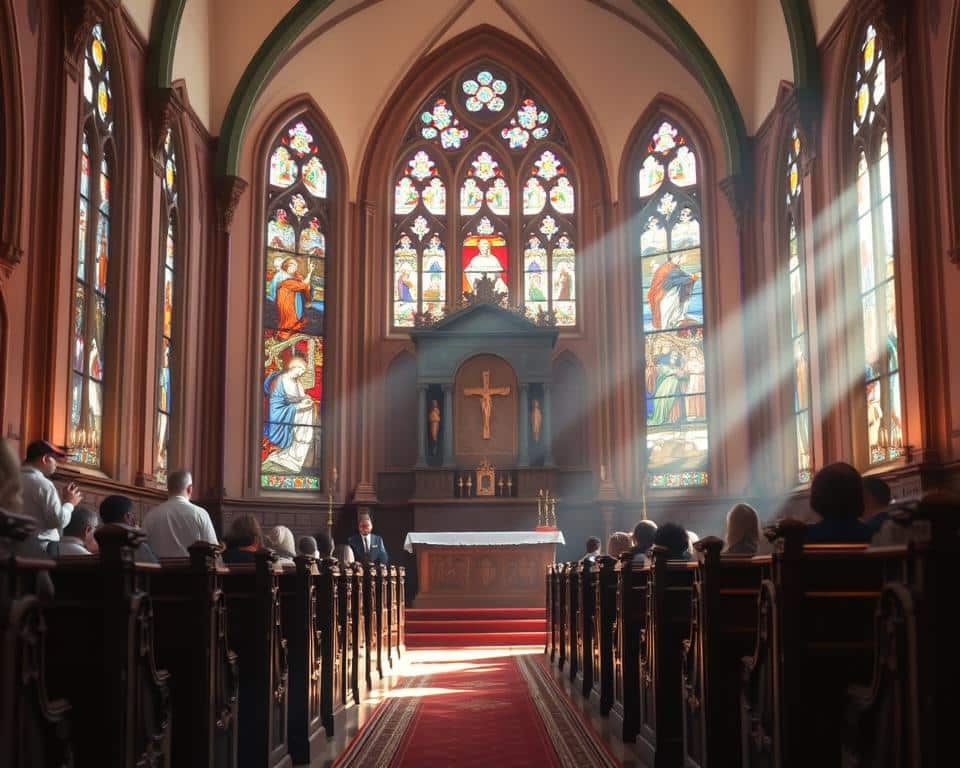
Jesus as the Fulfillment of the Sabbath
Farmers offered the first harvest as a promise of more to come. Similarly, Christ’s resurrection—the firstfruits (1 Corinthians 15:20)—guarantees our future hope. Physical rest in the Old Testament pointed to spiritual rest in Him.
Mark 2:27 reminds us the Sabbath served people, not the other way around. Jesus completed its purpose, offering deeper truth: rest for the soul.
The Resurrection as a Turning Point
At dawn on the first day, women found an empty tomb (Matthew 28:1). Grief shattered into joy. This moment birthed a New Testament pattern—gathering to celebrate victory over death.
Paul’s words in 1 Corinthians 15:20 tie the resurrection to new creation. Like a seed bursting to life, Christ’s rising reshaped worship forever. The verse isn’t just history—it’s our weekly invitation to hope.
How the Resurrection Changed Worship Practices
Death’s defeat on the first day rewrote sacred rhythms forever. Christ’s rising didn’t just mark a miracle—it launched a new era of gathering. The disciples’ grief turned to joy, and their worship shifted from mourning to celebration.
Significance of the First Day of the Week
Pentecost’s timing reveals God’s design. Leviticus 23:15–16 counts 50 days from resurrection Sunday to the Holy Spirit’s outpouring. These twin events—resurrection and Pentecost—became the church’s foundation stones.
Before the resurrection, Sabbath meant rest. Afterward, the first day meant victory. Jesus appeared to His followers on this day (John 20:19, 26), turning their Saturday despair into Sunday hope.
Early Disciples’ Response to the Resurrection
The disciples didn’t wait for annual feasts. They met weekly, breaking bread in homes (Acts 20:7). Temple-centric rituals gave way to intimate gatherings where teaching, fellowship, and communion thrived.
Acts 2:42 shows their blueprint:
- Teaching: They anchored in Scripture.
- Fellowship: Shared lives, not just rituals.
- Communion: Remembered Christ’s sacrifice.
This wasn’t a human invention. It was a Spirit-led response to the empty tomb. Every service became a declaration: “He is risen indeed.”
The Role of the Early Church in Establishing Sunday Worship
Lamps flickered in Troas as believers gathered after sunset, rewriting sacred rhythms. The first-day gathering wasn’t a minor change—it declared Christ’s victory over death. You might wonder how this practice took root so deeply.
Acts 20:7 and the Power of Shared Meals
Luke’s account in Acts 20:7 paints a vivid scene. Oil lamps cast shadows as Paul taught past midnight. The phrase “break bread” meant more than communion—it signaled full fellowship.
First-century meals bonded communities. In Troas, this shared table:
- United believers: Jews and Gentiles ate together, defying cultural divides
- Taught truth: Paul’s marathon teaching matched Jesus’ Emmaus road method (Luke 24:30-32)
- Marked time: Roman evening hours counted as the next day, confirming Sunday observance
Revelation 1:10’s Eternal Stamp
John’s Patmos vision anchors the term “Lord’s Day” in Scripture. This verse (Revelation 1:10) is the New Testament’s only use of the phrase—yet it echoes through history.
Early writings like the Didache (chapter 14:1) show consistency. By the 90s AD, believers globally gathered weekly to:
- Confess sins
- Give thanks
- Break bread as Jesus commanded
From Paul’s era to John’s, the pattern held. What critics call “man-made” bears divine fingerprints. The empty tomb reshaped time—and our day of worship still proclaims: “He is risen.”
Old Testament Foreshadowing of Sunday Worship
God’s plan in the Old Testament held hidden clues about resurrection hope. Festivals like Firstfruits weren’t just rituals—they pointed to Christ’s victory. Every detail in Leviticus 23:9–11, from the waved sheaf to the 50-day count, revealed God’s design.
Feast of Firstfruits and Pentecost
Priests waved a grain sheaf “on the day after the Sabbath” (Leviticus 23:11). Jesus rose precisely then—the first day of the week. Paul confirms this in 1 Corinthians 15:20: “Christ the firstfruits” of resurrection.
Pentecost’s 50-day count began at Firstfruits. In Acts 2, the Holy Spirit fell on that feast day, fulfilling the Old Testament pattern. The harvest imagery is clear: Christ’s resurrection started God’s spiritual harvest.
Leviticus 23 and Its New Testament Fulfillment
The law’s festivals were temporary shadows. Colossians 2:16–17 explains they pointed to Christ, the eternal substance. Firstfruits’ timing wasn’t coincidence—it was prophecy.
Three key parallels:
- Resurrection alignment: Jesus rose as priests waved the sheaf.
- Pentecost fulfillment: The Spirit came on the feast day.
- Harvest promise: Christ’s victory guarantees ours.
The New Testament didn’t erase the Old Testament—it revealed its full meaning. Every verse in Leviticus 23 whispers: “Sunday is coming.”
Jesus’ Post-Resurrection Appearances on Sunday
Dawn’s light revealed more than an empty tomb—it unveiled a pattern of divine encounters. Jesus chose the first day of the week for His resurrection and key meetings, setting a rhythm for His followers. Each appearance carried purpose, transforming doubt into faith.
Mary Magdalene wept at the tomb until Jesus spoke her name (John 20:16). Later, two disciples walked the Emmaus road, their hearts burning as He explained Scripture (Luke 24:32). That evening, He stood among them in a locked room—breathing peace and the Holy Spirit (John 20:22).
Eight days later, Jesus returned. Thomas touched His wounds and cried, “My Lord and my God!” (John 20:28). The interval wasn’t random. Jesus established a weekly expectation: Gather, and I’ll meet you.
Before the resurrection, Jesus healed on the Sabbath. Afterward, He appeared on the first day, shifting focus from rest to victory. The locked doors? A symbol. No barrier stops Him from reaching His people.
From Emmaus to Galilee, these encounters share a thread: Jesus prioritized Sunday. His example invites us to anticipate His presence—not just in sacred places, but in sacred time.
The Apostolic Example of First-Day Worship
Paul’s letters reveal a clear pattern—believers gathered on the first day week for worship and giving. Two key passages, 1 Corinthians 16:1–2 and Acts 20:7, show how the apostles shaped this practice. Their model wasn’t random; it reflected Christ’s resurrection hope.
Giving with Purpose: 1 Corinthians 16:1–2
Paul instructed the Corinthian church to set aside offerings “on the first day of every week” (1 Corinthians 16:2). This verse wasn’t about convenience—it tied giving to resurrection celebration. The funds supported famine relief, showing faith in action.
Some argue this allowed home storage. But Paul’s goal was systematic generosity. Every first day week, they prepared to share. Today, your giving follows this same rhythm—a weekly act of worship.
Troas: A Night of Teaching and Communion
Acts 20:7 paints a vivid scene. Believers met to break bread, and Paul taught until midnight. This wasn’t a casual meal but a service centered on Christ. The timing—sundown to dawn—proves their commitment.
- Apostolic authority: Paul modeled Sunday gatherings, not Sabbath-keeping.
- Unity: Shared meals crossed cultural divides.
- Teaching: Prolonged Scripture study mirrored Jesus’ Emmaus road method.
Like the Troas believers, you’re called to prioritize gathering. Whether in person or online, the first day week remains your anchor. The apostles’ example wasn’t tradition—it was truth in motion.
Why Sunday Worship Is Not “Man-Made”
Critics claim Sunday gatherings began with Constantine, not Scripture. But the fact is, the New Testament and early church writings prove otherwise. Let’s examine the evidence.
Biblical Evidence Against This Claim
Paul urged believers to “stand firm and hold to the traditions” taught by apostles (2 Thessalonians 2:15). The word “traditions” here includes practices like Sunday worship—passed down orally and in letters.
Think of the Trinity. Scripture implies it without using the term. Similarly, the New Testament implies Sunday worship through:
- Resurrection appearances: Jesus met disciples on the first day (John 20:19, 26).
- 1 Corinthians 16:2: Offerings collected weekly.
Acts 20:7: Believers gathered to break bread.
Historical Continuity From the New Testament
Long before Constantine, the practice was established. The Didache (AD 90–110) instructs: “On the Lord’s Day, gather and break bread.” Ignatius (AD 110) called it “the day of resurrection.”
Contrast this with Christmas or Easter, which blended pagan customs. Sunday worship’s roots are purely apostolic. As Richard Foster realized, it’s about biblical example, not human tradition.
“Tradition is the living faith of the dead; traditionalism is the dead faith of the living.”
In today’s world, holding to this practice isn’t traditionalism—it’s faithfulness to the New Testament pattern. The resurrection changed everything, and our gatherings still proclaim it.
The Joy of Sunday Worship for Early Christians
Darkness lifted as dawn broke—not just on the horizon, but in the hearts of believers. The disciples’ Saturday grief shattered when Jesus appeared. Their tears turned to joy, proving death’s defeat. This day became their weekly celebration.
Early gatherings pulsed with life. Justin Martyr described hugs, shared meals, and prayers echoing off walls. Pliny noted they sang “to Christ as God”—voices loud, hearts full. For them, church wasn’t duty; it was a family reunion.
Hebrews 10:25 urges: “Don’t neglect meeting together.” Why? Because people need hope. One believer’s laughter lifts another’s burden. Like the Emmaus road disciples, we say, “Didn’t our hearts burn?” (Luke 24:32).
Today, your time with fellow believers still echoes that first-century joy. The resurrection isn’t history—it’s your reason to gather. As Pliny saw, Christ’s presence turns ordinary days into sacred moments.
How Sunday Worship Deepens Our Relationship with Christ
Your weekly rhythm with Christ matters more than you might realize. Like resetting a compass, gathering on His day realigns your heart with truth. Jesus invites, “Come to me… and I will give you rest” (Matthew 11:28). This isn’t just physical rest—it’s soul renewal.
Communion mirrors Jesus’ call to abide in Him (John 15:4). As vines draw life from the branch, you’re nourished at His table. The bread and cup aren’t symbols—they’re encounters with His presence.
Think of marriage. Regular dates nurture intimacy, even when life gets busy. Your gathering with Christ works the same way. Psalm 122:1 captures this joy: “I rejoiced with those who said, ‘Let us go to the house of the Lord.’”
Modern distractions compete for your time—sports, work, screens. Yet choosing worship strengthens your bond. Hearing God’s word preached builds faith (Romans 10:17). Each sermon plants seeds that grow through the week.
Try this: Jot down one insight from each day of worship. Review them midweek. You’ll see how God speaks consistently, shaping your personhood in Christ.
“Worship is the act of loving God for who He is.”
Whether you sing, pray, or listen, every moment draws you closer. The resurrection isn’t just history—it’s your weekly invitation to know Him more.
Sunday Worship as a Celebration of Victory
Every gathering is a victory march. What seemed like Satan’s win on Friday turned to Christ’s triumph by dawn. Your church isn’t just meeting—it’s raising banners of hope. Like soldiers cheering their king, believers proclaim: “Death is swallowed up in victory” (1 Corinthians 15:54).
Think of each service as a mini-Easter. The resurrection wasn’t a one-time event—it’s your weekly reason for joy. Revelation’s throne room scenes come alive when you sing. Every hymn echoes heaven’s chorus: “Worthy is the Lamb!”
Eastern Orthodox believers shout, “Christ is risen!” The response thunders back: “He is risen indeed!” This isn’t ritual—it’s reality. Your presence declares Christ’s lordship over every shadow.
Join the unending celebration. From the empty tomb to eternity, the first day shines with resurrection light. Come hungry. Leave victorious.

